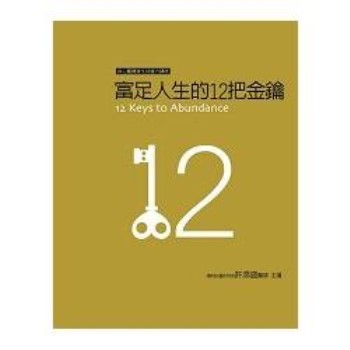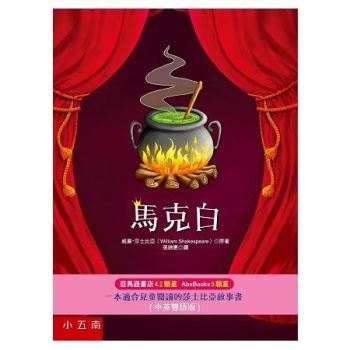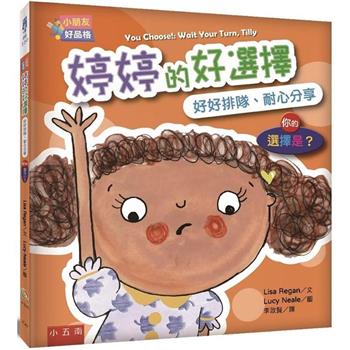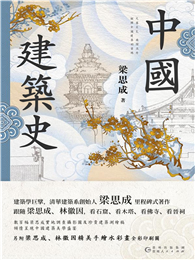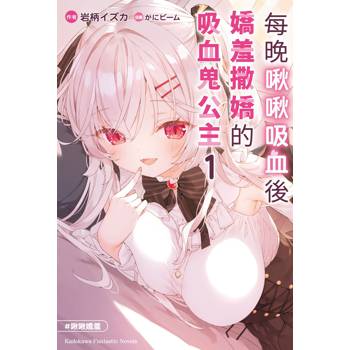| FindBook |
有 3 項符合
光大傳承─南加州華人三十年史話:第二卷(全四卷,國際英文版)的圖書 |
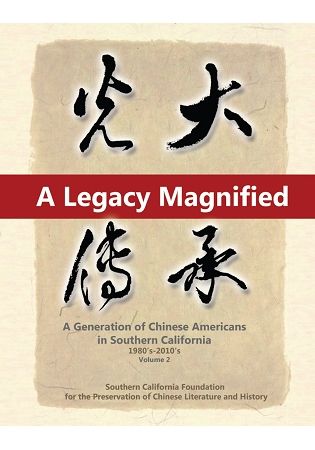 |
光大傳承─南加州華人三十年史話:第二卷(全四卷,國際英文版) 作者:陳十美(總編輯) 出版社:漢世紀數位文化EHGBooks 出版日期:2017-12-01 規格:29.74cm*21.59cm (高/寬) / 平裝 / 558頁 |
| 圖書館借閱 |
| 國家圖書館 | 全國圖書書目資訊網 | 國立公共資訊圖書館 | 電子書服務平台 | MetaCat 跨館整合查詢 |
| 臺北市立圖書館 | 新北市立圖書館 | 基隆市公共圖書館 | 桃園市立圖書館 | 新竹縣公共圖書館 |
| 苗栗縣立圖書館 | 臺中市立圖書館 | 彰化縣公共圖書館 | 南投縣文化局 | 雲林縣公共圖書館 |
| 嘉義縣圖書館 | 臺南市立圖書館 | 高雄市立圖書館 | 屏東縣公共圖書館 | 宜蘭縣公共圖書館 |
| 花蓮縣文化局 | 臺東縣文化處 |
|
|
- 圖書簡介
A Legacy Magnified: A Generation of Chinese Americans in Southern California, 1980’s-2010’s (南加華人三十年史話英文版) is a monumental publication jointly authored by a team of renowned group of writers consisting of 17 chapters, nearly 1 million words, and more than 1,300 photographs, many of which are collected from historical archives. It is an unprecedented endeavor undertaken by more than 500 volunteers who were privileged to have witnessed the drastic and amazing transformation of Chinese American communities in Southern California during the critical three decades, from the 1980’s to the 2010’s.
This handsome volume encompasses an historical account of multifarious realms of community development, including various aspects of culture, history, political participation, economic growth, businesses, education, language, sports, mass media, science and technology, scholarly research, literature, music, dance, theatre and other performing arts, among other subjects.
This book is substantial, and is dedicated to “All Chinese of past, present, and future generations who contribute to the world culture by incorporating the quintessence of Chinese civilization and their heritage.”
Postscript
A Crystal Formed Out of 900,000 Beads of Sweat
Following 1,460 days of toil and labor, an estimated 1,460 person-visits to the small meeting room of the American-East Asian Cultural and Educational Foundation, and consuming over 1,460 boxes of bento, A Legacy Magnified: A Generation of Chinese Americans in Southern California, 1980’s-2010’s, containing over 900,000 Chinese characters, is finally available in print.
In the past 30 years, the Chinese in Southern California excelled in their respective fields of expertise and in all realms of activities, including culture, politics, economy, education, sports, mass media, business, science and technology, academics, arts, literature, music, dance, drama, food, and service industry. They have thrived and continue to flourish. To write a book like A Legacy Magnified covering all these aspects with limited human and financial resources and working under time constraints would have been quite impossible.
Fortunately, when I proposed to write a book like this, I received warm responses from the Chinese community. More than a hundred individuals signed up as volunteers, and donations streamed in. I was greatly encouraged. While I was excited about the prospect, I felt that the onus of my responsibility was heavy. In order to live up to the expectations of my supporters, I treaded with fear and trepidation as if I was walking on thin ice. I sketched the book’s plan and structure and proactively commenced the work.
Initially I thought we could publish the book after collecting enough articles and material within four months. Unexpectedly, however, we continue to receive more and more material from all sources. It has taken us four years, instead, to produce this volume after we have incorporated all available information and data. As a result of the enthusiastic response from the Chinese American communities, the original plan to divide the book into fourteen chapters in approximately 60,000 Chinese characters, was once expanded to about 2,000,000 characters. We have managed, finally, to reduced the book to approximately 900,000 characters in seventeen chapters in its current form and shape. Dr. San-pao Li, Professor Emeritus, a historian by profession, thoughtfully offered the capstone of this book with its encompassing title Guang Da Chuan Cheng 光大傳承(Legacy Magnified), highlighting the historical significance of this publication.
During this period of over four years of research, exploration, and visitations, we solicited and received more than 300 articles. We collected oral history of over 500 individuals. In addition, we also collected over 200 books and publications related to our subject, over 1,000 newspaper clippings, over 1,000 questionnaires from Chinese American families, over 1,000 precious photos, and more than 2,000 pieces of contact information of outstanding personalities in the Chinese American community. In the meanwhile, we developed and launched a new web site that will enable us to continue to update our content in the future. In the process of compiling this work, we received support from University of California, Los Angeles besides the Chinese community. UCLA East Asian Library launched a special project and employed additional staff to further document the oral histories of some eminent Chinese Americans in order to archive them as raw research material for in-depth scholarly studies in the future.
As I was sorting out the nearly 2,000 telephone numbers collected, I recall how tirelessly we went out of the way to search for relevant information. I recall how our editorial team collected, reviewed and edited the manuscripts contributed by over 100 outstanding Chinese American, and how assiduously they reconciled the innumerable factual contradictions, verified, sorted out, complied, reviewed and fixed the errors. I recall how our volunteers rendered their service so willingly and selflessly. Touched by the dedication of all these individuals, I became frequently oblivious of time, skipping meals and sleep. I recall the many warm and thoughtful encouragements offered as well as skepticisms of all kinds. I recall getting up in the countless early mornings, still exhausted and fatigued, yet with strong conviction and faith, I struggled to continue the tasks before me. I recall the four years during which I neglected inadvertently my family and many of the administrative responsibilities of the school of which I am the principal. I recall the unparalleled commitment displayed by my fellow workers in the modest editorial staff office located at the back of the Sunshine Education Center. This project of immense scope is now finally completed. The 900,000 Chinese characters contained in this book represent, indeed, the crystallization of 900,000 beads of sweat. While my heart dances with joy, I find myself in fear and trepidation. Although I feel that I have exhausted my utmost, the limited space available in this book cannot possibly comprehensively document every marvelous detail of the splendid history of the Chinese immigrants in Southern California during the past half century. Errors are understandably unavoidable, but what makes me feel uneasy most is the possibility of inadvertent omissions of much of the accomplishments of many outstanding individuals. The only comfort is that we have developed and launched a website through which we can always supplement and update information received in the future. I hope earnestly that our readers here and abroad will continue to offer constructive comments and suggestions.
Finally, before this book goes to print, I wish to extend my profound gratitude to all individuals and Chinese American organizations and their leading officers for their guidance, suggestions as well as their financial contributions during the entire process of its preparation and production. The Chinese language media spared no space to report to their readers or viewers details of every stage of this project. I remain deeply touched. The American-East Asian Cultural and Educational Foundation and the North America Chinese Writers’ Association in Los Angeles北美洛杉磯華人作家協會, of both which I am a member, contributed significantly during the initial phase of this project. The unstinting support that I have received from the board members of the Southern California Foundation for the Preservation of Chinese Literature and History Inc.南加華人文史保存基金會, all of whom are eminent individuals, the sustained encouragement of all the teachers, students, and their parents alike at Sunshine Education Center, and the generous support from my family and friends will forever be remembered. Last but not the least, I would like to acknowledge with profound gratitude and appreciation the dedication, commitment, and diligent effort of each and every participant in this project and its staff. My sincerest gratitude to you all!
May Chen
November 31, 2013
Los Angeles, CA - 作者簡介
南加華人文史保存基金會(Southern California Foundation for the Preservation of Chinese Literature and History)
The Foundation was established on January 20, 2013. Its purpose was to continue the effort of American East Asian Culture and Education Center to bring to conclusion the publication of A Legacy Magnified: A Generation of Chinese American in Southern California, 1980’s-2010’s with additional expertise. It is our hope to continue to document the successes and accomplishments achieved by Chinese Americans in the Southland during that past three decades. Founding members of the Board of Directors included Michael G. Cheung, Karen Chen, Paul Shao-Han Sher, Evans Y. Lam, Jin-jen Lee, Grace Hu, Sandy Ho, David H. Ma, Cathy Kit-yee Choi, Frances Wang, William S. Chin, Shiyun Chung, and honorary members such as Huibao Xu, Karen Kuo-Limb, Ming Bin Kuo, Joseph Y. Hsu, Ellen Fu, Leo Chu, Richard Y. Koo, Tung Wang, Matthew Yuan-Ching Lin, and Tom Tsong-ming Liaw, all leaders of various community organizations and associations. They each rendered significant service and support. The roles of the Board members are rotated annually. The current members are: Evans Y. Lam (President), May Chen (Chief Executive Officer), Karen Chen (VP), Michael G. Cheung (VP), Paul Shao-Han Sher (Treasurer), Shiyun Chung (Secretary), Sandy Ho (PR), William S. Chin (PR), and San-pao Li, Jin-jen Lee, Yunding Li, Jinping Duan, Cathy Kit-yee Choi, Frances Wang, Grace Hu, Suellen Cheng, and Karen Kuo-Limb.
南加華人文史保存基金會(Southern California Foundation for the Preservation of Chinese Literature and History)
The Foundation was established on January 20, 2013. Its purpose was to continue the effort of American East Asian Culture and Education Center to bring to conclusion the publication of A Legacy Magnified: A Generation of Chinese American in Southern California, 1980’s-2010’s with additional expertise. It is our hope to continue to document the successes and accomplishments achieved by Chinese Americans in the Southland during that past three decades. Founding members of the Board of Directors included Michael G. Cheung, Karen Chen, Paul Shao-Han Sher, Evans Y. Lam, Jin-jen Lee, Grace Hu, Sandy Ho, David H. Ma, Cathy Kit-yee Choi, Frances Wang, William S. Chin, Shiyun Chung, and honorary members such as Huibao Xu, Karen Kuo-Limb, Ming Bin Kuo, Joseph Y. Hsu, Ellen Fu, Leo Chu, Richard Y. Koo, Tung Wang, Matthew Yuan-Ching Lin, and Tom Tsong-ming Liaw, all leaders of various community organizations and associations. They each rendered significant service and support. The roles of the Board members are rotated annually. The current members are: Evans Y. Lam (President), May Chen (Chief Executive Officer), Karen Chen (VP), Michael G. Cheung (VP), Paul Shao-Han Sher (Treasurer), Shiyun Chung (Secretary), Sandy Ho (PR), William S. Chin (PR), and San-pao Li, Jin-jen Lee, Yunding Li, Jinping Duan, Cathy Kit-yee Choi, Frances Wang, Grace Hu, Suellen Cheng, and Karen Kuo-Limb.
總編輯陳十美,May Chen, Editor-In-Chief
•President of American East Asian Culture & Education Foundation
•Founder and Chief Executive Officer of Southern California Foundation for the Preservation of Chinese Literature and History
•President of North America Chinese Writers' Association, Los Angeles
•Principal of Sunshine Education Center
•Publisher of So Cal Chinse Community, 1980-1989
•Founded Huaxing Academy and Sunshine Education Center in 1987
May Chen has resided in the United States for over three decades, during which she has spared no effort in engaging herself in a wide spectrum of activities promoting Chinese culture and civilization. She has dedicated her entire adult life to educate others about China’s cultural heritage. - 目次
Table Of Contents
Table Of Contents i
Preface I I
Preface II IV
Preface III VII
Preface IV X
Introduction XV
CHAPTER FOUR ADVANCEMENT IN POLITICAL PARTICIPATION AND ELECTIONS 1
I. The Chinese Exclusion Act of 1882 Restricted the Entry and Naturalization of Chinese Laborers 1
1. The Chinese Americans’ Political Participation before 1965 5
2. Various Organizations Have Been Set Up To Fight For the Civil Rights of the Chinese 6
3. The Elites of the First and Second Generations of Chinese Americans Started to Participate in Party Politics 8
4. Running for Public Office, the First Taste of Election Process for the Immigrants 10
4.1 Wing Foon Ong Won from the City of Phoenix Became the First Chinese American to Be Elected 10
4.2 Wing Luke, March Fong Eu, William Soo Hoo, and Tom Hom Followed 11
5. The Chinese Efforts in Political Participation after 1965 13
5.1 Daniel K. Wong and Lily Lee Chen, Forerunners of Political Participants among the First-Generation Naturalized Chinese Americans 15
5.2 The Thriving Chinese Political Participation Led by Yau Leong Fong in Hawaii 17
6. The Chinese Political Participation Gradually Attracted Attention at the End of the 1980s 20
6.1 Opportunities for Chinese Political Participation Gradually Increased 21
6.2 The Political Participation of the Chinese in the City of Monterey Park and Their Contributions 22
7. The Tendency and Characteristics of Political Participation for the Chinese in Southern California 28
7.1 The Ethnic Population Base does not Guarantee Political Success of Ethnic Candidates in America 29
7.2 The Residents’ General Quality and Their Active Participation are the Foundation for Success 30
7.3 Maturation of Chinese Political Participation in Southern California 31
7.4 Overcoming Subtle Differences and Unifying Ethnic Groups is the Way to Success 35
8. Statistics and Analysis of Elected Chinese Officials and Council Members on State and City Levels in Southern California in the Past Thirty Years 35
8.1 Chinese as a Model Ethnic Group with Positive Images 41
8.2 The Concentration of Chinese in Small or Medium-sized Cities Makes Them Ideal Places to Elect Chinese Council members 46
8.3 Some Reflections on the Apology by the Congress for the Chinese Exclusion Act 52
II. Short Biographies of Chinese Elected Officials 53
1. The Elected Member of Congress: 53
1.1 Judy May Chu 53
2. The Elected State-Level Officials: March Fong Eu, John Chiang, Michael F. Eng, Carol Liu, Ted W. Lieu, and Tom Hom 57
2.1 March Kong Fong Eu 57
2.2 John Chiang 58
2.3 Michael F. Eng 60
2.4 Carol J. Liu 61
2.5 Ted W. Lieu 62
2.6 Tom Hom 63
3. The Elected City-Level Officials 63
3.1 Monterey Park 64
3.2 San Marino 67
3.3 Arcadia 70
3.4 Cerritos 72
3.5 Walnut 73
3.6 South Pasadena 75
3.7 Diamond Bar 76
3.8 Rosemead 77
3.9 San Gabriel 78
3.10 Alhambra 80
3.11 Claremont 81
3.12 Temple City 81
III. The Social Organizations that Promote Chinese Political Participation 83
1. National-Level Organizations 83
1.1 Chinese American Citizens Alliance 83
1.2 Committee of 100 84
1.3 Organization of Chinese Americans 85
1.4 Center for Asian Americans United for Self-Empowerment 86
2. Local Organizations 87
2.1 80/20 Initiative and L.A. 80/20 Initiative 87
2.2 Chinese-American Elected Officials 89
2.3 Asian Pacific Islander American Public Affairs Association 90
2.4 Indochinese American Political Committee 91
IV Chinese Political Participation: Elections and Voting 91
1. The Voices of the Elected Officials 91
2. The Chinese Advisers and Assistants Popular with the Political Mainstream 98
3. Some Factors Affecting Chinese Voter Turnout Rate 104
3.1 Some Older Chinese Voters Did Not Understand English Well and Were Not Familiar With Voting Procedures 105
3.2 Some Voters Did Not Have a Strong Sense of Civic Duty and Did Not Cherish the Value of Voting 105
3.3 Some Voters Had a Weak Sense of Political Participation and Avoided or Gave up Voting 106
3.4 Only by Exercising the Right to Vote Can the Rights and Interests of Ethnic Groups Be Protected 106
3.5 An Admonition from Shun Kuo Su 108
V. Chin Ho Liao, Council member of San Gabriel and the “Chin Ho Liao Case” in 2013 109
1. The Candidates Who Lost the Election Controlled the Council and Prevented the Elected Official from Taking Office 110
2. “If Chin Ho Liao Was not an Asian American, Would the Situation Have Turned Out Like This?” 111
3. City Residents Questioned the Contest: Groundless Suing Only Wasted Public Tax Money 113
CHAPTER FIVE RIGHTS ADVOCACY AND NON-GOVERNMENTAL EXCHANGES 115
I. The Murder of Vincent Chin Incident 116
1. The Case Hearing Process and the Group Protest from the Asian Rights Advocates 116
2. The Founding of the American Citizens for Justice and A Strong Urge to Retry the Murderers 118
3. The Great Impact of the Vincent Chin Incident on t Chinese Americans 118
4. The Incident Motivated Asians to Form Many Civil Rights Advocacy Organizations 120
5. The Incident Alerted Asian Americans to Their Vulnerable Status and the Need to Seek Ways to Counter it. 121
II. The Chinese Civil Rights Advocacy at the City of Monterey Park 122
1. The Ethnic Conflicts as a Political Storm in the 1980s 122
2. The Emergence of Whites as a Political Force 123
3. The Proposition of the Radicals: “English Only Movement” (The Movement of English as an Official Language) 124
4. The Disputes Over Chinese Language Signboards 124
5. Asians and Latinos Formed A Coalition for Harmony In Monterey Park 126
6. The Recall Movement was in Full Swing 127
III. The Wen Ho Lee Incident 129
1. The Persistent Skepticism of Asian Scientists’ Loyalty to America by the American Officials 130
2. Wen Ho Lee’s Book My Country Versus Me 132
IV. The Collective Fight for a Public Apology for Past Discriminatory Laws in California against Chinese 134
1. From May-ling Soong to Judy May Chu----Two Great Heroines 134
2. Credits Also Belongs to the Major Chinese American Organizations 140
V. Stories of Some Early Rights Advocacy in Southern California 141
1. Legalization of Traditional Chinese Medicine, An Exemplary Event 141
2. Hsiu-Chin Lin’s Traffic Violation Incident 142
3. The Incident of American Air Force Downing One of Its Own Airplanes by Mistake 143
4. The Monterey Park Library Incident 145
5. Struggle for the Right to Life for the New Immigrant Lao Zhaoqi 146
VI. The Experience and Lessons from the Chinese Cases of Rights Advocacy 147
1. Starting from Small Matters and Fighting for Legal Protection 148
2. Understanding American Culture and Basic Knowledge of Law 148
3. Uniting All Ethnic Groups in the Advocacy of Rights Can Better Protect the Chinese 149
VII. Chinese in Southern California Pledged Loyalty to America and Protected the Rights of Chinese in the Armed Forces 155
1. The Chinese Joining the Armed Forces are Well Remembered 155
1.1 Chinese Serving in the Armed Forces during WWII 156
1.2 Women in the Armed Forces Play No Less Important Role than Men 157
1.3 “Our Blood Intermingled.” Victor Lu Left His Name in a Police Museum 158
1.4 The High Quality Chinese Military Men and Women Shoulder Great Responsibility in Preserving the Honor of the Nation 160
1.5 The New Conscription Policy that Was Meant to Attract Non-Citizens 163
1.6 The Increasing Incidents of Bullying in the Army 164
1.7 The Great Endowment of the Chinese Make Them Excellent Military Men and Women 168
2 Respect Historical Truth and Safeguard Chinese Territory 169
2.1 The Flags from Both Mainland China and Taiwan Are Flying. Overseas Chinese Claim Sovereignty Over the Diaoyu Islands 170
2.2 Anti-Japan Storm Was Raging in Los Angeles---4/24 Demonstration 175
2.3 Preserving Historical Truth: Global Alliance for Preserving the History of WWII in Asia and Los Angeles United Chinese Organizations 178
2.4 Yun Lang,a Movie-Maker, Single-handedly Raised Funds to Film “Nanking Massacre.” 179
2.5 A Japanese American Filmed a Documentary On Japanese Aggression in China 180
2.6 A Book Launch for Iris Chang’s The Rape of Nanking 181
2.7 British Prime Minister Visited General Liu of Ren’anqiang Victory 181
VIII. Love and Charity are the Best Lubricants to Smooth Ethnic Barriers 182
1. L.A. Charity Organizations 182
1.1 Buddhist Tzu-Chi Foundation, U.S.A. 182
1.2 Fo Guang Shan Hsi Lai Temple 183
1.3 Renewal Foundation USA 183
1.4 Herald Cancer Association 184
1.5 Simply Help Foundation 184
1.6 Morning Light Foundation 185
1.7 Hong Kong Schools Alumni Federation 186
1.8 Asian Pacific Community Fund 188
1.9 Hands across California 188
1.10 Foundation for Disabled Youth 189
1.11 Southern California Council of Chinese Schools 189
1.12 Asian Youth Center 190
1.13 International Youth Fellowship 190
1.14 San Gabriel Educational Foundation 190
1.15 American Chinese Culture and Education Foundation 190
2. Chinese Entrepreneurs Upheld the Charity Principle of “Taking from Society and Giving Back to Society” 191
2.1 Frank Su Donated “Westminster Garden” 191
2.2 Patrick Soon-Shiong Huang Provided A $0.1 Billion Guarantee So That Martin Luther King Hospital Could Reopen 193
2.3 Ming Hsieh Donated $85 Million to His Alma Mater 194
2.4 Steeve Kay Donated 5 Million Dollars to Chapman University 194
2.5 Evans Lam and Susanna Lam Donated Over $2.5 Million to Their Alma Mater 194
2.6 Andrew Cherng and Peggy Cherng from Panda Express Made a Donation to California State Polytechnic University at Pomona 195
2.7 Winston Chung, the Inventor of Rare Earth Lithium Yttrium Battery from Shenzhen Made a Donation to His Alma Mater, UC Riverside 195
2.8 Leo Chu Donated to USC for Its Cooperation with 13 Hospitals in China 195
2.9 Grace Hu Donated $750,000 to Whitney High School 196
2.10 Shang-Li Huang and Betty Huang Donated $1 Million to Caltech and Other Universities 196
2.11 David Sun Donated $0.18 Billion to Mackay Medicine, Nursing and Management College in Taipei 196
2.12 Stephen Hawking, Cambridge University Physicist, Paid a Visit to Sally Wong-Avery 197
2.13 Walter Wang and His Wife’s Charity Work and Generous Acts 197
2.14 Joesph Ko Set Up a “Shihua Primary School” In Almost Every Province in China 197
3.A Commoner’s Kind-heartedness Demonstrates the Sublime Beauty of Human Nature 198
3.1 Guang Jiu Zeng Sold His House to Donate to His Alma Mater Meizhou High School 198
3.2 Pastor Amy Wang,a Guardian Angel for the Homeless 198
3.3 The World Becomes Beautiful Because of You--- A Legend of Betty Chinn 199
4 Carving Names for Themselves in the “Garden of Flowing Fragrance” 199
4.1 Edmond Hsin-tung Pi and Yee-Jen Shuai Initiated the Plan to Build “Garden of Flowing Fragrance” 200
4.2 Roger Wang Hung and Wilbur K. Woo Each Donated $1 Million 200
4.3 Mei-Chu Hsu Sun Sold Her House to Donate In Memory of Her Late Husband 200
4.4 Judy Yin Shih and Joel Axelrod Donated $2 Million to the Building of “Clear and Transcendent Pavilion” 202
IX. Active Participation of Chinese Americans in Rights Protection 202
1. The History of Chinese American Participation in Mainstream International Organizations 202
1.1 Kiwanis International 203
1.2 Lions Clubs International 204
1.3 Rotary International 207
1.4 L.A. Chinese American Sheriff Advisory Committee 209
2. Cultural Exchanges Through Twin and Sister City Programs 209
2.1 Goodwill Ambassadors Emerged Through Various Beauty Pageants 213
3. Add Chinese Cultural Elements to Grand Mainstream Cultural Activities 215
3.1 Rose Parade is Never Absent in New Year Celebrations 215
3.2 Actively Celebrate Independence Day and Observe Flag-raising Ceremony 219
X. Chinese Americans Boldly Speak Their Mind, Are Passionate about Charity Work, and Actively Merge into Mainstream Society 221
CHAPTER SIX Remarkable Accomplishments in Chinese American Enterprises in High-Tech and Other Industries 225
I. Some Features Characterizing the Growth of the Chinese American Enterprises in the Past 30 Years 225
1. The High-tech Enterprises Sprouted Up and Blossomed 226
2. The Chinese American Banking Industry Rapidly Expanded 226
3. International Trade Had a Great Leap Forward 227
4. The Chinese American Hotels Began to Operate as Enterprises 227
5. Chinese Restaurants Are the Mainstay of the Chinese American Traditional Industry 227
6. “Regional Agglomeration of Specific Industry” was Still the Feature of San Gabriel Valley Chinese Economic Circle 227
7. The Relaxed and Liberal Investment Environment Made California an Ideal Place for Asian Investors 228
8. The Floating Capital from Mainland China and Taiwan Benefits Chinese American enterprises in Southern California 229
II. Growth of Chinese American High-tech Enterprises in Southern California 230
1. The Rise and Fall of the Computer Assembly Industry 231
2. Rise of the Internet Changed the Mode of Enterprise Operations Drastically 232
3. Entertainment and Medicine Become Two Main High-tech Industries in Southern California 233
4. A Synopsis of the Large- and Medium-Sized High-tech Enterprises in Southern California 233
4.1 Newegg.com Leading On-line Shopping Site 233
4.2 BenQ Corp. Has Great Brand Advantage 235
4.3 Kingston Technology, World’s Largest Computer Memory Manufacturer 237
4.4 NantOmics Established by Patrick Soon-Shiong, the Richest Man in Southern California 240
4.5 Watson Pharmaceuticals, World’s Third Largest Pharmaceutical Company 243
4.6 Denny Ko, a Technology Titan, Inductor, and Leader 246
4.7 Cogent Systems, Producer of Automated Fingerprint Identification System 248
4.8 Vizio Inc. LCD TVs Have the Largest Market Share 250
4.9 ViewSonic, No. 1 Producer of Stand-alone Displays in North America 252
4.10 Marvell, Technological Innovator 254
4.11 Tetra Tech Inc.,the Largest Environmental Protection Consulting Firm in the U.S. 255
4.12 Microtek, World Leader in Scanner Industry 256
4.13 JM Eagle Strives to Produce the Best Quality of Plastic Conduct 257
4.14 Superior Communications, Largest Blackberry Distributor in the World 260
4.15 TRENDnet, One of the Top Five Wireless Networking Solutions Sellers 261
5. A Synopsis of Major Technology Organizations in Southern California 263
5.1 Chinese-American Engineers and Scientists Association of Southern California, CESASC) 263
5.2 International Chinese Transportation Professionals Association, Southern California Chapter 265
5.3 International Association of Chinese Geotechnical Engineers 267
5.4 Society of Chinese-American Aerospace Engineers, SCAAE 268
5.5 Southern California Chinese-American Environmental Protection Association 270
5.6 Chinese American Professional Society 271
5.7 Southern California Monte Jade Science and Technology Association 273
5.8 Chinese-American Computer Association 274
5.9 San Diego Chinese American Science and Engineering Association 275
III. A Synopsis of the Traditional Chinese Businesses in Southern California 276
1. Stable Operation of Chinese American Banks in Southern California 277
1.1 Chinese American Banks that Flourished in the 1980s 277
1.2 The Banks that Began to Take Shape in the Chinese Community In the 1990s 282
1.3 The Rise and Decline of the Chinese American Banks in the Financial Storm 283
1.4 The Medium- and Small-Sized Banks that Grew against the Tide 285
1.5 The Future of the Chinese American Banks 286
1.6 A Synopsis of a Few Representative Chinese American Banks 287
1.7 The Symbiosis of the National Association of Chinese American Banks and Chinese American Banks 292
2. Catering, Food and Exports of Seafood Industry 293
2.1 Red Chamber Co., A Leader in Frozen Shrimp and Seafood 294
2.2 Panda Express Maintained Chinese Traditional Cuisine while Catering to the American Palate 296
2.3 Aseptic Solutions USA 298
2.4 Wei Chuan Company Provider of “Worry-free” Foods 299
2.5 Uni-President Upheld “Three Excellences and One Fairness” 301
3 International Trade and Light Industry Manufacturing 302
3.1 Sunrider Follows the Idea of “The Same Origin of Medicine and Food” 302
3.2 America Chung Nam, Inc. The Largest Recycled Paper Provider in China 304
3.3 Tireco, Inc., the Largest Dealer in Tires in North America 305
3.4 Brothers Peter Woo and Charlie Woo,Toy Industry Tycoons 307
4. Chinese American Aviation and Shipping Industries 309
4.1 China Airlines, the First Airline in Taiwan 309
4.2 Eva Air Provider of Deluxe Economy Class 312
4.3 Air China, A Chinese Civil Aviation Company 313
4.4 China Southern Airlines Has the Largest Aircraft Fleet 315
4.5 China Eastern Airlines, the First Listed Company in Chinese Aviation Industry 317
4.6 Evergreen Marine, Leader in the Global Shipping Industry 317
4.7 Cosco, Global Container Shipping 319
4.8 Trans-Union, 320
IV. The Ranking of Chinese American Enterprises in 2012 L.A. Business Journal by Industry 321
1.The Ranking of the Fast Growth Private Chinese American Enterprises in L.A. County 321
2.The Ranking of Chinese American Enterprises as Providers of Health Insurance 321
3.The Ranking of Chinese American Enterprises in the Aviation Industry 322
4.The Ranking of Chinese American Enterprises among the Ethnic Minority Private Enterprises 323
5. The Ranking of Chinese American Enterprises among the Private Enterprises 324
6.The Ranking of Chinese American Banks among the Public Companies in 2010 325
7.The Ranking of Chinese American Companies in Shipping Industry 327
V. The Contributions that Chinese American High-Tech and Large- and Medium-Size Enterprises Have Made to American Economy 328
CHAPTER SEVEN Outstanding Accomplishments in Scientific Research and Education 331
I Higher Education 331
1. Chinese American Professors and Their Relationships with the Nobel Prizes 332
2. External Conditions for the Birth of Nobel Prize Winners 334
3. A Synopsis of the Higher Education Systems in Southern California 338
3.1 Small and Yet Quintessential Private Research University 339
3.2 Public Research Universities 340
3.3 Private Research University 341
3.4 CSU, The University that Trains Specialists of All Kinds 341
3.5 Community Colleges 341
4. The Growth of the Chinese American Faculty in the Past 30 Years and Its Trend 342
5. Examples of the Outstanding Chinese American Professors in the Different Educational Systems in Southern California 355
5.1 Caltech 355
5.2 University of California (UC) 365
5.3 University of Southern California 378
5.4 California State University (CSU) 385
5.5 Community College and Research Institutes 394
6. An Extension of the Education on Chinese Culture in Higher Learning Institutions 399
II Primary and Secondary Schools Education 405
1. Chinese American Superintendents and Principals Become Backbones in Mainstream Education 408
2. The Extension of Chinese Language Teaching in Secondary Education 411
3. Examples of Awards Received by Chinese American Primary and Secondary School Students 414
III Outstanding Supervisor in the Adult Education 416
IV The Important Contributions Made by the Chinese American Elected School Trustees 418
V The Chinese Scholars Association Organization and Function 420
VI Important Educational Events and the Response from Chinese Community 422
VII The Chinese Exchange Students in America: Current Status and Characteristics 425
1. The Huge Market for the Chinese Students Coming to America Has Been Welcomed by Mainstream Educational Institutions 425
2. The Problems of the Influx of “Underage Exchange Students” 427
3. The Advantages and Disadvantages of the Chinese Exchange Students 431
3.1 Hard-working and Excellent in School Performance 431
3.2 Affectionate and Grateful 432
3.3 There is Room for Improvement in Initiative, Creativity and Leadership Skill 433
4. How to Deal with the Negative Impact of American Education 435
5. Various Scholarships and Grants Available to the Students 438
5.1 Federal Pell Grants 438
5.2 Federal Supplemental Educational Opportunities Grant (FSEOG) 438
5.3 National SMART 438
5.4 Teacher Education Assistance for College and Higher Education Grants 439
5.5 Work Study 439
5.6 Cal Grants 439
6. Parents of Students Need to Face the Reality of Campus Bullying and Drugs 440
VIII With the Chinese Focus on Education, the Chinese in America Will Surely Score Greater Successes in Education 440
CHAPTER EIGHT Rapid Development in Chinese Language Education 443
I. The Chinese Americans’ Journey of Exploration for Chinese Language Education 444
1. The Birth and Growth of Chinese Language Education as Motivated by the Students’ Parents 446
1.1 The Number of Students Grows Like a Pyramid: The More Senior the Age Group, the Fewer the Students 447
1.2 Specialist’s Advice: Chinese Should be Studied as a Second Language 448
2. Strive to Incorporate Chinese into Mainstream Educational Program: SAT-II 449
2.1 Immersion and All-Dimensional Chinese Language Teaching Is More Welcome 450
2.2 The Promotion of Teaching Cannot Avoid Political Interference 453
2.3 As Long as They Have a Motivation, They Can Accomplish Much by Teaching Themselves 454
2.4 Southern California Council of Chinese Schools published Textbooks and Supplementary Teaching Materials 455
2.5 National Council of Associations of Chinese Language Schools (NCACLS) was Established in Response to Needs 456
3. With the Approval from the College Board ,Chinese AP Course Got Promoted. 457
4. STARTALK Program Opened a Direction of Future Development for Chinese Language Teaching 458
5. SB1116 Bill Pushed Chinese Language Education into a New Epoch 462
6. The Pioneer in Overseas Chinese Education in Southern California: SCCCS 463
7. Thirty Years of History of Chinese Language Education: Its Vicissitudes 466
7.1 Chinese Confucius Temple of Los Angeles 467
7.2 Chinese Language School of Southern California, West LA 467
7.3 San Fernando Valley Chinese Language School 468
7.4 Cerritos Chinese Language School 468
7.5 Conejo Valley Thousand Oaks Chinese School 469
7.6 Hacienda Heights Area Chinese School 469
7.7 Confucius Center 470
7.8 Arcadia Chinese School and Culture Center 470
7.9 Chinese Culture School of Los Angeles 471
7.10 North Orange County Chinese School 472
7.11 Yat-san Chinese Art School 472
8.“Scriptural Reading Class” Forms a Subsidiary of Chinese Language Education 474
9. The Bottleneck in the Development of Chinese Language Education and the Ways to Break It 476
9.1 The change in population structure 476
9.2 Various needs that give rise to “Chinese fever” 476
9.3 The Importance of Homeland Security 477
9.4 The Importance of Digital Teaching 477
9.5 A Large Number of Professional Language Teachers and Principals Must Be Trained 478
9.6 The Learning Should Be Extended Beyond the Classroom 480
II. To Meet the Needs of the Times, Chinese Language Education Has Flourished with Its Intrinsic Value and Meaning 480
1. As the Tide Turns, Chinese Has Now Become a World Language 481
1. America Also Needs a Large Number of Qualified Chinese-Speaking Specialists. 484
2. Chinese Language Is Listed as One of the Foreign Languages Tested for Entrance to University 484
III. Confucius Institute and Taiwan Academy 484
1. Confucius Institute 485
1.1 Confucius Institute at UCLA 485
1.2 Confucius Institute at San Diego State University 486
1.3 The Confucius Classroom at Hacienda Met with Challenges 487
1.4 Visa Problems 489
2. Taiwan Academy 490
3. Chinese Resources in Chinese Community Libraries 492
3.1 Bilingual Storytelling and Activities in Crowell Public Library 492
3.2 Chinese American Reading Association 493
3.3 Chinese America Ethic Education Association 494
IV. The Governments Across the Straits Strengthened Their Support for Chinese Language Teaching 495
1. In Response to Multidimensional Needs, a New Territory of Education for the Overseas Chinese is Actively Extended 495
2. Enhance the Teachers’ Professional Skills and Set up a Sound Testing System 496
3. Integrate Educational Resources Both in China and Abroad and Enhance the Effectiveness of Teacher Training 496
4. Conceive a Mechanism for Reaching Out to the World through the Cooperation between the Governments cross the Straits 497
5. The Cooperation cross the Straits in Response to the “STARTALK” 497
6. Considering Co-hosting Chinese Language Education Symposiums 498
7. Promote Overseas Chinese Language Certification 498
V. Chinese Culture is a Tie Linking the Chinese American Family 499
1. The Charms of Chinese Learning Lie in Its Emphasis on the Unity between Heaven and Man and Veneration of Heaven and Fellow Human Beings 499
2. Learning Chinese Characters Helps Develop the Left and Right Sides of the Brain of Children 500
3. Communication to the Children with Chinese Hel fostering the Loving Relations between the Two Generations 501
4. Let the New Generation Not Forget Their Roots while Merging into Mainstream American Society 502
|
